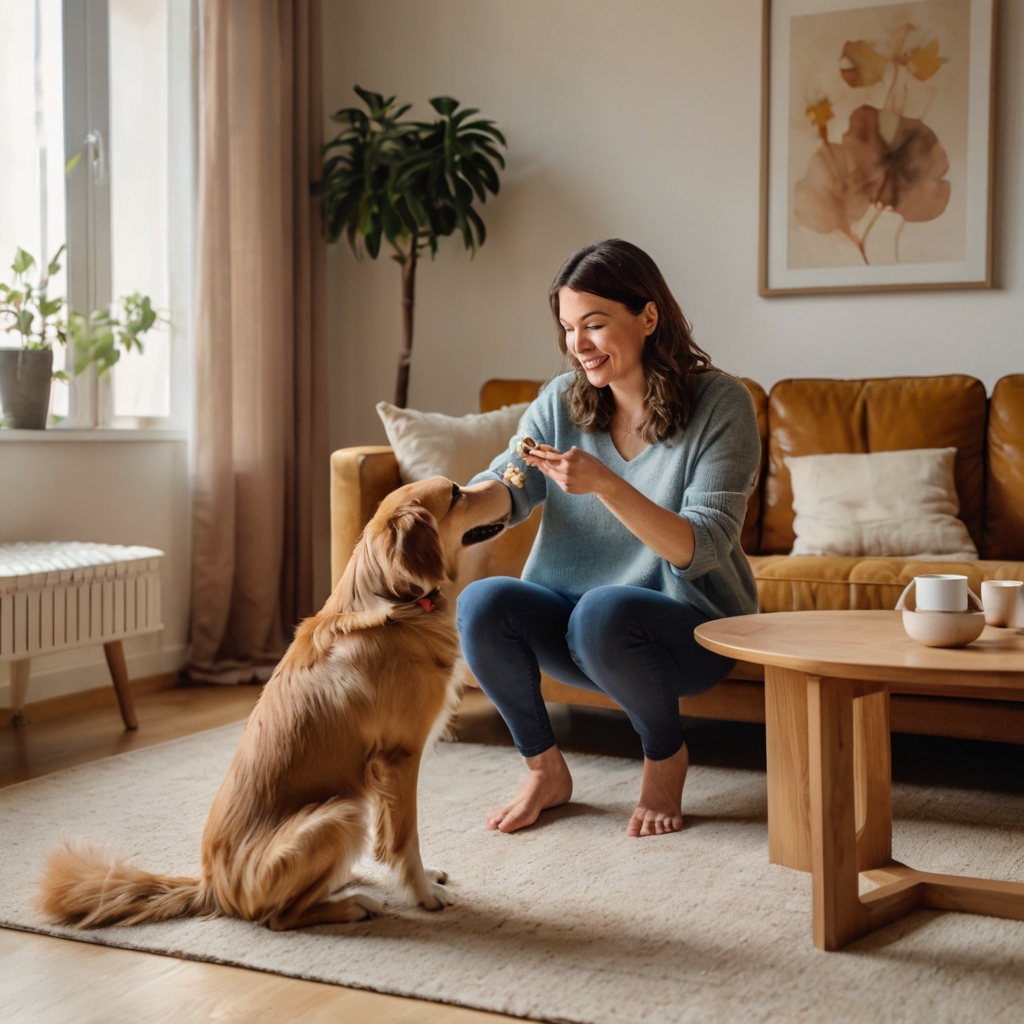Positive Training: What It Is and How to Start – Discover what positive training for pets really means and how to start using gentle, effective techniques to shape your pet’s behavior for life.
Introduction
Pet training has come a long way from harsh discipline and dominance-based methods. Today, more pet owners and trainers are turning to positive training for pets—a technique rooted in kindness, science, and long-lasting results.
But what exactly is positive training? How does it work, and why do experts recommend it over traditional methods? In this comprehensive guide, you’ll learn everything you need to start training your pet in a way that’s respectful, effective, and enjoyable for both of you.
What Is Positive Training? – Positive Training: What It Is and How to Start
Positive training, also known as positive reinforcement training, focuses on rewarding desired behaviors rather than punishing unwanted ones. It is based on the principle that animals (and humans) are more likely to repeat behaviors that lead to pleasant outcomes.
Instead of using fear or force, you use treats, praise, play, or affection to teach your pet what you want them to do.
Key Principles:
- Reward-based: Reinforce the behavior you want with something your pet loves.
- Clear communication: Use signals (like clickers or markers) to help pets understand.
- No punishment: Undesired behaviors are redirected or ignored—not punished.
- Patience and consistency: Behavior changes take time, especially in the early stages.
Why Choose Positive Reinforcement?
Positive training methods are supported by veterinarians, animal behaviorists, and organizations like the American Veterinary Society of Animal Behavior (AVSAB). Here’s why:
1. Builds Trust
Your pet learns to see you as a source of safety and rewards—not fear.
2. Reduces Anxiety and Aggression
Punishment can increase stress and even cause aggression. Positive methods reduce fear-based behaviors.
3. Encourages Learning
Pets are more motivated to participate in training when it’s enjoyable and rewarding.
4. Suitable for All Species
While often used with dogs, positive training also works with cats, birds, rabbits, and even exotic pets.
Essential Tools for Positive Training
You don’t need expensive equipment—just a few tools and a lot of patience:
- Treats: Small, soft, high-value treats work best.
- Clicker: A small device that makes a clicking sound to mark correct behavior.
- Target stick: Helps guide your pet to positions or movements.
- Leash and harness: For safe training during walks.
How to Start Positive Training Step-by-Step
Step 1: Choose the Right Reward
Not all pets are food-motivated. Some prefer play or praise. Try different rewards to see what your pet values most.
Step 2: Mark the Behavior
Use a clicker or a verbal marker like “Yes!” the moment your pet performs the desired behavior.
Step 3: Deliver the Reward Immediately
Timing is everything. The faster you reward the behavior, the stronger the association.
Step 4: Keep Sessions Short and Frequent
Aim for 5–10 minutes per session, 2–3 times a day. End on a high note.
Basic Commands to Teach with Positive Training
- Sit – Guide your pet into a sitting position and reward.
- Stay – Ask your pet to sit, then slowly increase the time before giving the treat.
- Come – Use a happy tone and reward generously when they come to you.
- Leave it – Teach impulse control by rewarding them for not touching an object.
- Go to your spot – Direct your pet to a mat or bed and reward them for staying there.
Each command builds not just obedience, but also focus and confidence.
Troubleshooting Common Challenges
My Pet Ignores the Treats
- Try different types of treats (cheese, chicken, fish).
- Train when they’re slightly hungry—not after a big meal.
My Pet Gets Too Excited
- Pause and wait for calm before restarting.
- Use lower-value rewards to reduce overexcitement.
My Pet Doesn’t Seem to Learn
- Break the command into smaller steps.
- Be consistent with your signals and timing.
How to Avoid Mistakes in Positive Training
- Don’t bribe: Reward after the behavior, not before.
- Don’t repeat commands: Say it once and wait. Repeating can confuse your pet.
- Don’t rush: Let your pet learn at their own pace.
- Don’t use punishment alongside: It undermines the trust and confuses the learning process.
When to Start Training
The earlier, the better. Puppies and kittens can begin learning basic commands as early as 8 weeks old. But it’s never too late—older pets can also thrive with positive reinforcement.
Read More
Read More on our website!
Role of Pets in Health: 7 Ways Pets Improve Well-being
Conclusion
Positive training for pets is more than just a method—it’s a mindset. By choosing kindness over correction, you’re not just shaping your pet’s behavior—you’re building a stronger, deeper relationship.
Whether you’re starting with a new puppy or helping an older pet learn new habits, positive reinforcement is one of the most powerful tools you have. Start slow, be consistent, and celebrate every small success along the way.


